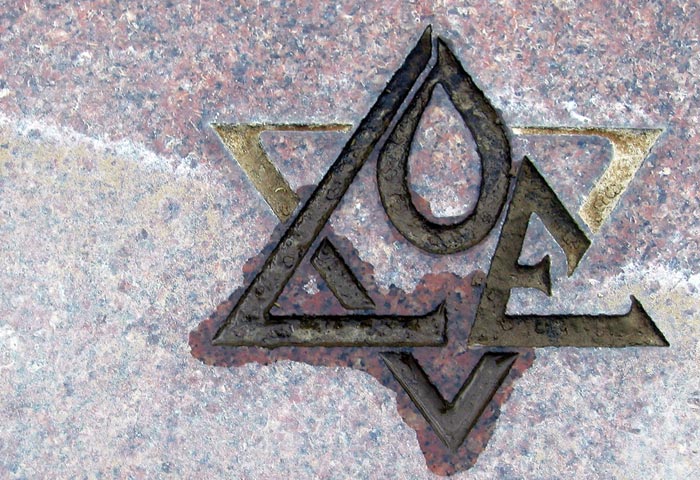Shanghai resident Seth Kaplan got tired of celebrating the High Holy days in rented hotel spaces while the city’s oldest intact synagogue sat empty, deteriorating just a few miles away.
So along with others in his congregation of expatriates, Kaplan, 34, began advocating for the restoration of Ohel Rachel, which the Chinese Communists had turned into a warehouse.
Their efforts came to fruition recently when the World Monuments Fund added the synagogue, built in the 1920s, to the 2002 Watch List of 100 Most Endangered Sites. The fund, which publishes the list to bring attention to threatened cultural sites around the world, revises its list every two years. The 2002 list includes one other synagogue, Subotica Synagogue in Yugoslavia, built in 1902. The list includes well-known sites such as the Great Wall of China as well as more obscure ones such as a Gothic church in Poland.
According to Henry Ng, the fund’s executive vice president, Ohel Rachel was chosen because it symbolizes the long history of the Jews in China. "This is really the only active synagogue left in all of China that’s authentic," he said.
Ohel Rachel is urgently in need of repair.
For nearly 50 years, the building has been used by various state and local governmental bodies. Reoccurring leaks and vegetation growth threaten its structural fabric.
Perhaps the most important factor in the fund’s decision to include Ohel Rachel on the list was the energy and commitment of Shanghai’s Jewish community. The synagogue "has that local, on-the-ground group that’s willing to be advocates for the building and to basically ensure its long-term future," Ng said.
While inclusion on the list will likely draw international attention to the site, there are no immediate financial rewards.
Kaplan, who was born in New York, said his community plans to undertake a campaign to raise money for the repairs.
Ohel Rachel is one of only two remaining synagogues in Shanghai. The other, Ohel Moshe, has been turned into a museum.
When the Ohel Rachel Synagogue was built, Shanghai had a population of approximately 1,700 Jews.
It was constructed to accommodate a community of approximately 600 Jews from Baghdad living in Shanghai at the time.
With a seating capacity of 700, the Sephardic synagogue had a walk-in ark that once held 30 Torah scrolls. The synagogue is part of a small compound that at one time included a Jewish school, library, playground and mikvah.
Sir Jacob Elias Sassoon, a Baghdadi Jew living in Hong Kong, endowed the synagogue in memory of his wife, Lady Rachel.
The first major wave of Jews, arriving primarily from Baghdad and Bombay, came to Shanghai after the city was opened to foreign traders in 1842, following the Opium War.
A second wave of Jewish emigrants came from Russia in the decades following the 1917 Russian Revolution.
The third wave of Jews moved to Shanghai from Central Europe in the 1930s and during World War II. Because the city was the only place in the world not to require a visa for entry, approximately 20,000 Jews escaped to Shanghai between 1938 and 1945.
After the Communist takeover in 1949, Shanghai’s Jewish community dwindled.
The new government confiscated Ohel Rachel in 1952, removing its furniture and decorations.
During the Cultural Revolution in the 1960s, Ohel Rachel’s windows, chandeliers and ornaments were smashed, and the building was then used for a variety of government functions.
Most recently, the Shanghai Government Education Commission used it for offices and storage.
In 1993, the city of Shanghai declared Ohel Rachel a historic landmark, which granted it some protection, but continued to use it as a municipal building.
After then-U.S. First Lady Hillary Rodham Clinton and Secretary of State Madeline Albright asked to visit the building during a 1998 visit to China, the city cleaned up and painted the building, but little structural repair was done.
Ohel Rachel is still owned by the city government, which lets Shanghai’s Jewish community of approximately 300 — which is served by a Lubavitch rabbi — use it only a few times a year.
Kaplan and the rest of his congregation hope that the Monuments Fund listing will encourage the city to return the building to his congregation.
He said he wouldn’t mind if the city used it as a museum — as it has said it wants to — as long as the congregation is able hold services there.
"It’s a symbol of Jewish-Chinese relations," Kaplan said. "It’s also a symbol of what the Chinese people have done for us in the past, such as for the refugees during the war," he added.
"This synagogue represents the past. It represents the future. It needs to be restored."






















 More news and opinions than at a Shabbat dinner, right in your inbox.
More news and opinions than at a Shabbat dinner, right in your inbox.